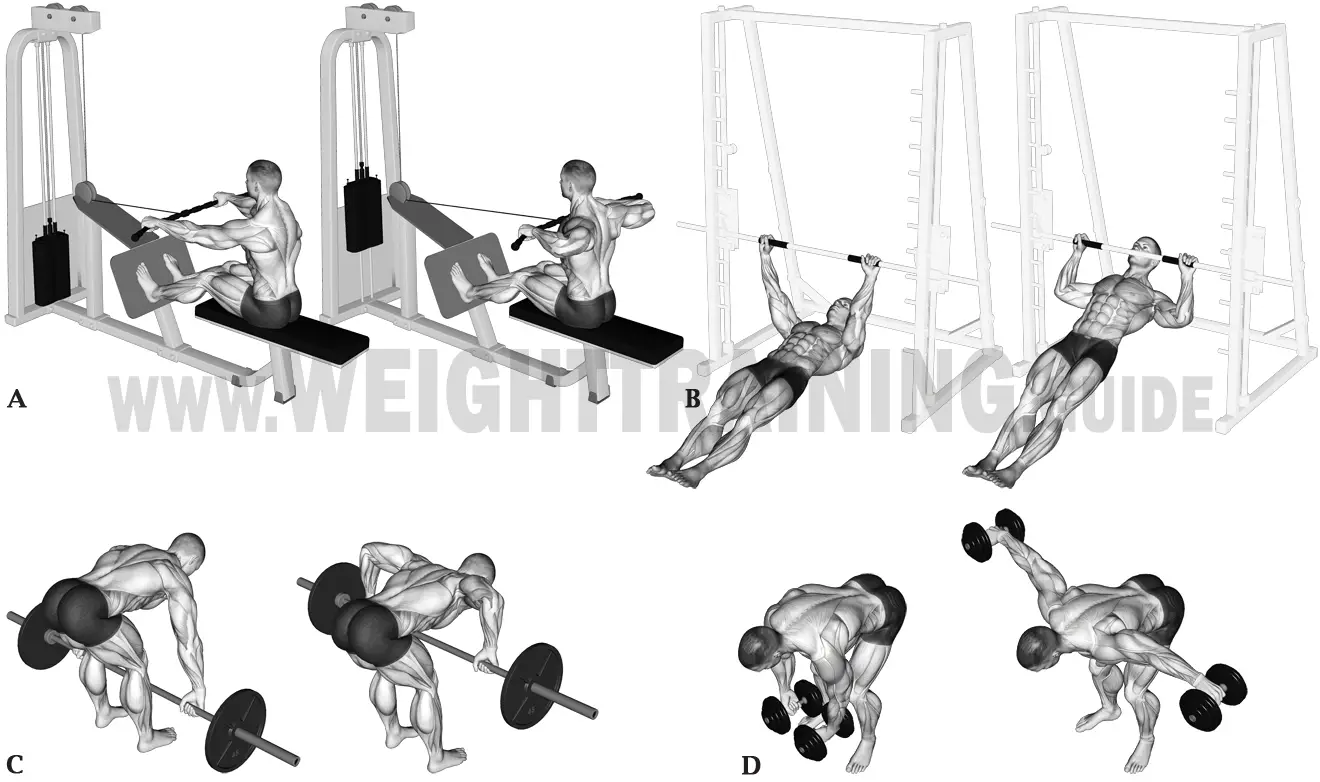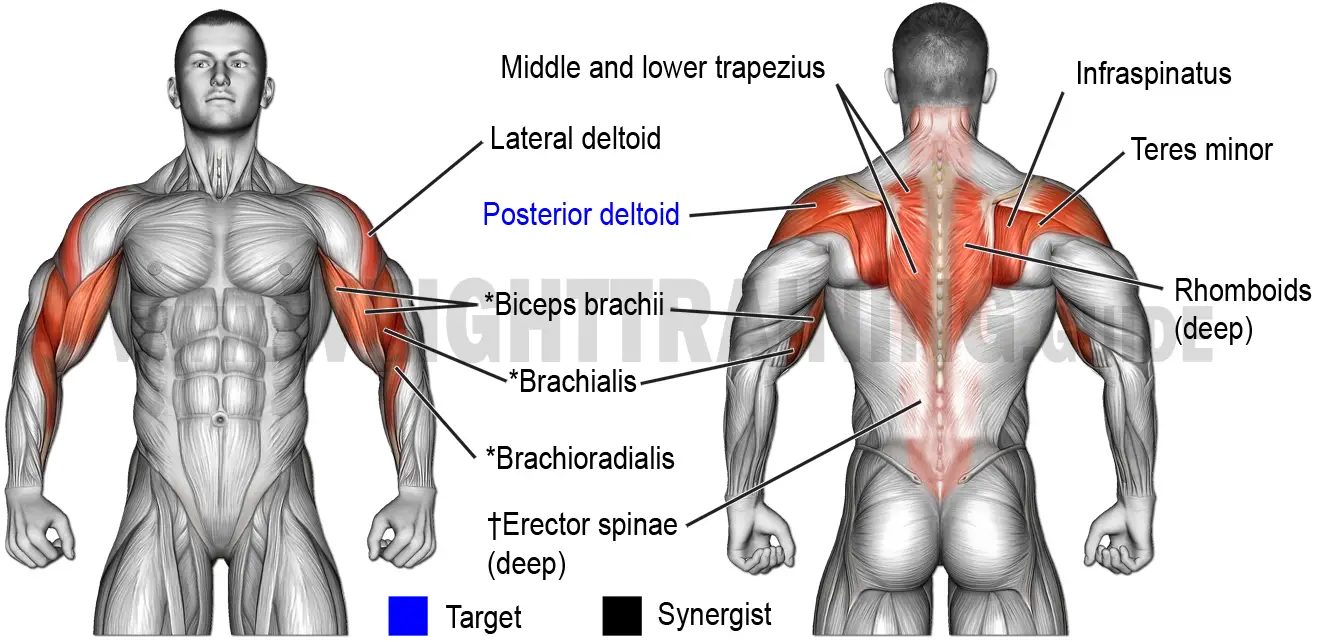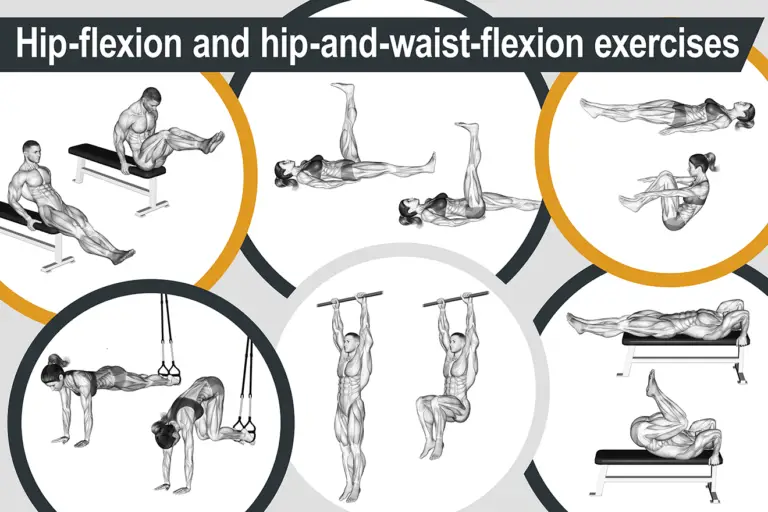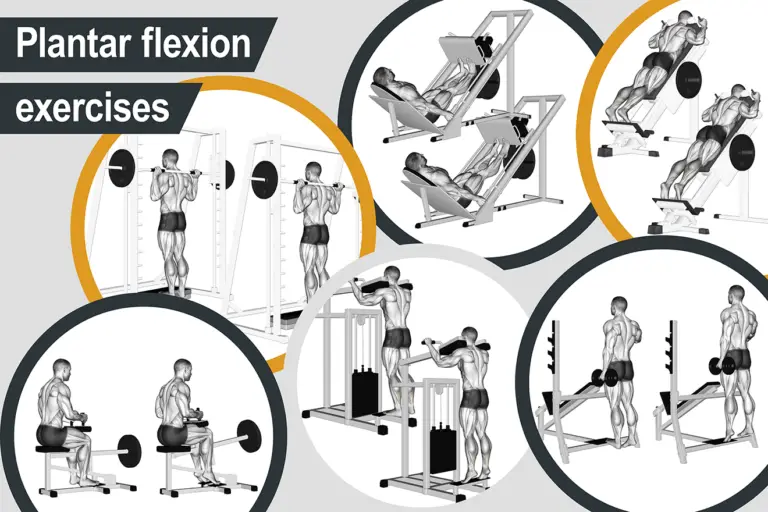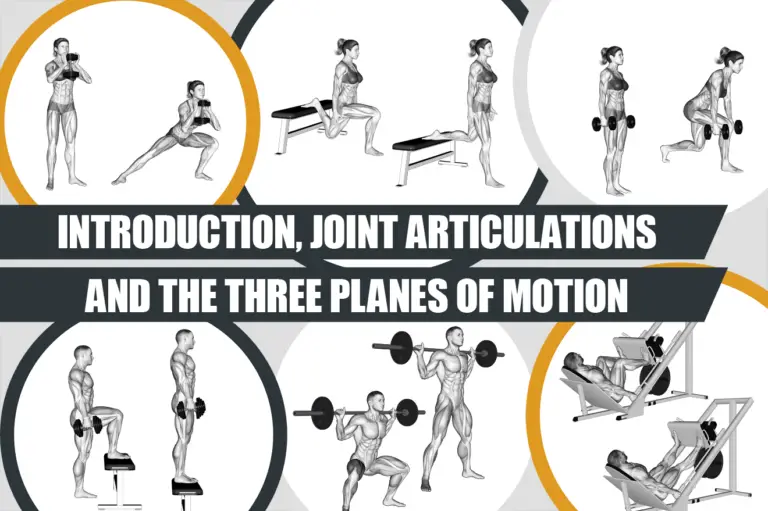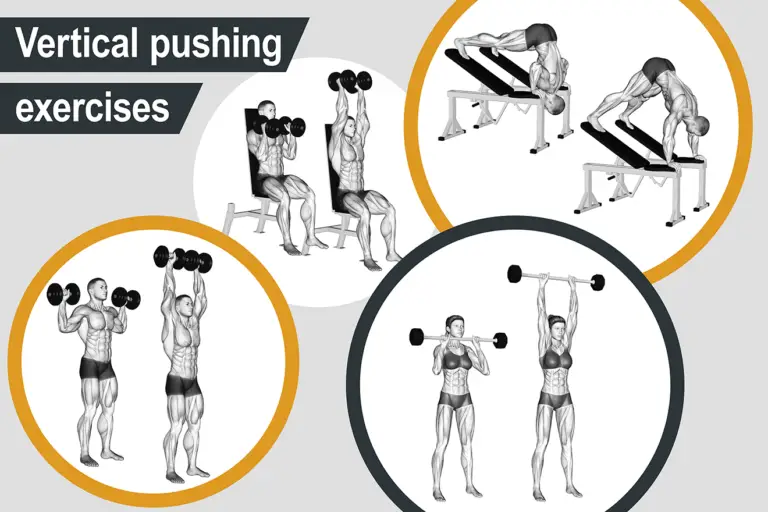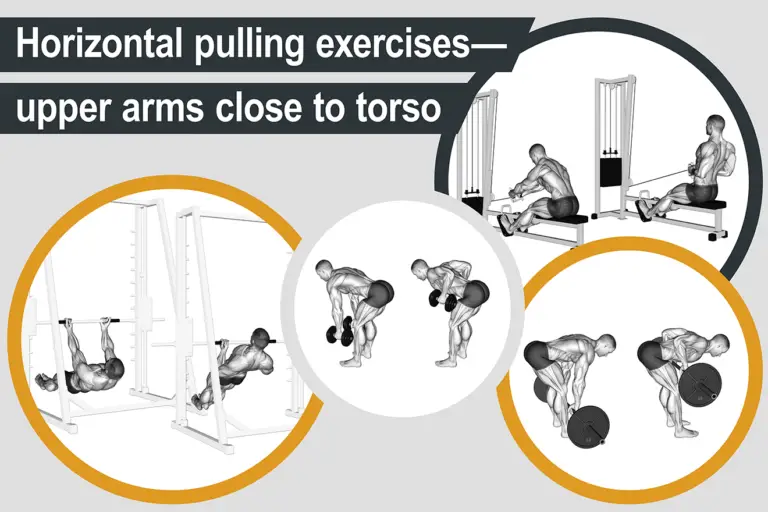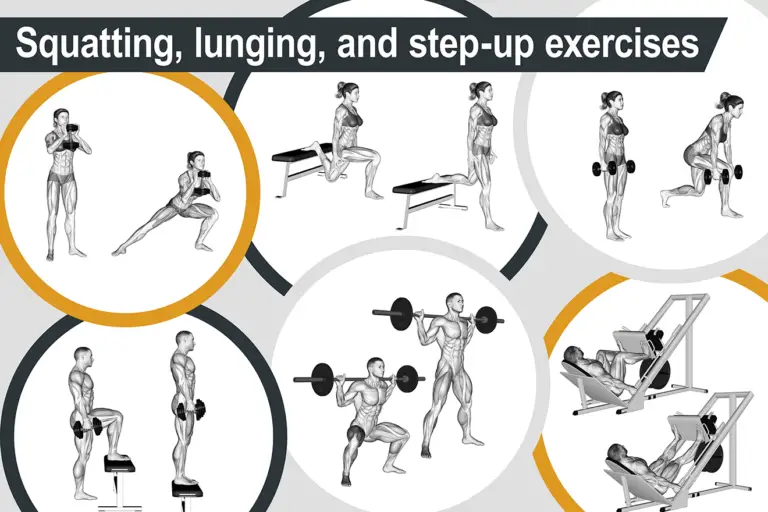Horizontal pulling exercises—upper arms out to sides
Movement patterns and classification
Horizontal pulling exercises in which you keep your upper arms raised out to your sides (for example, Figure 1) can be either compound or isolation.
The compound exercises involve either pulling a weight to your chest or pulling your chest up to a stable bar, with the angle of pull being perpendicular to your torso (for example, the seated cable rear delt row and the inverted rear delt row; Figure 1, A and B, respectively). The back is usually kept in a neutral position. These exercises combine horizontal shoulder extension with elbow flexion, with emphasis on the former.
The isolation exercises (for example, the reverse dumbbell fly; Figure 1, D) involve pulling a weight away from your midline while maintaining extended elbows. These exercises use only horizontal shoulder abduction.
Figure 1. Examples of compound and isolation horizontal pulling exercises in which you keep your upper arms raised out to your sides. A. seated cable rear delt row; B. inverted rear delt row; C. barbell rear delt row; D. reverse dumbbell fly.
Muscle activation
Whether compound or isolation, all horizontal pulling exercises in which you keep your upper arms raised out to your sides target your posterior deltoid and synergistically activate your lateral deltoid, infraspinatus, teres minor, middle and lower trapezius, and rhomboids (Figure 2). The compound exercises also synergistically activate your elbow flexors (biceps brachii, brachialis, and brachioradialis). If you allow waist extension, your erector spinae will contribute as synergists. If you maintain a straight back, your erector spinae will act only as stabilizers. However, if you use a heavy weight, your erector spinae can still be activated to a very significant degree even when acting only as stabilizers.
Figure 2. Main muscles activated by compound and isolation horizontal pulling exercises in which you keep your upper arms raised out to your sides. *A synergist only in compound exercises. †Synergists only if you allow waist extension; otherwise, important stabilizers.
See also Horizontal pulling exercises—upper arms close to torso.


